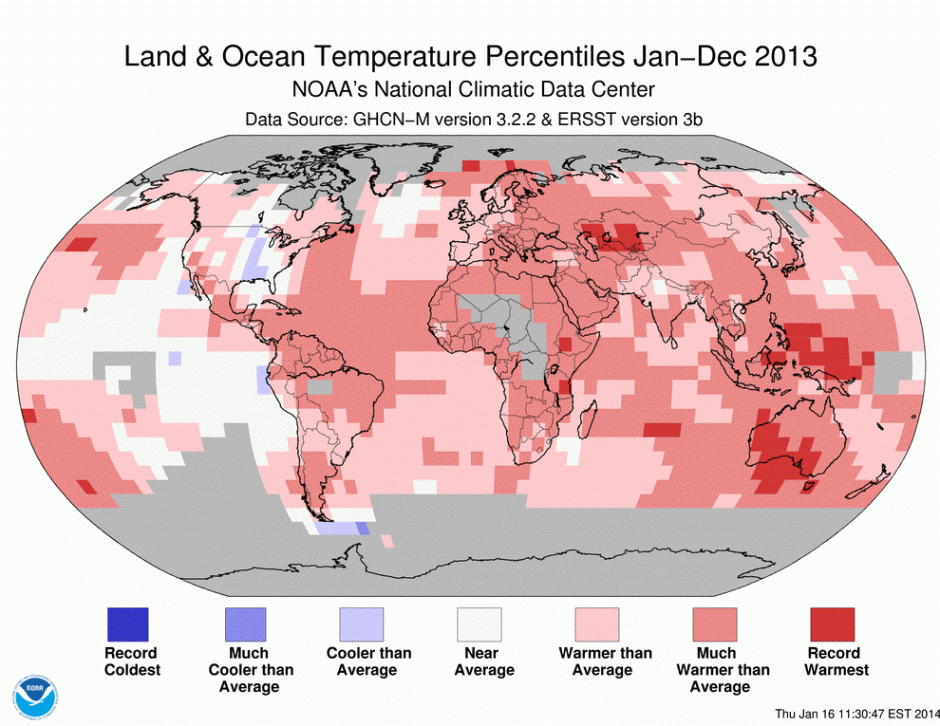2013 Was The Fourth Warmest Year Since 1880, Continues 37 Year Weather Warming Trend
The annual analysis of global surface temperatures by the National Oceanic and Atmospheric Administration, NOAA, indicates 2013 was the fourth warmest year since 1880. NASA’s analysis has it slightly lower, coming in as the seventh warmest year and tied with 2009 and 2006.

Both agencies agree 2013 continues the 37 year warming climate trend where the annual temperature was above the long-term average. Nine of the 10 warmest years on record are from the 2000’s, the lone exception being 1998. The warmest year on record was 2010 which was 0.66 degrees Celsius (1.19 degrees Fahrenheit) above the long-term average.
NOAA’s 2013 global average, combining surface temperature of the land and ocean was 0.62 degrees Celsius (1.12 degrees Fahrenheit) above the long-term average, which is 13.9 degrees Celsius (57 degrees Fahrenheit). The average surface temperature for land was 0.99 degrees Celsius (1.78 degrees Fahrenheit) above the 20th century average of 8.5 degrees Celsius (47 degrees Fahrenheit). The average ocean temperature was 0.48 degrees Celsius (0.86 degrees Fahrenheit) above the long-term average of 16.1 degrees Celsius (60.9 degrees Fahrenheit).
While both hemispheres experienced record warm temperatures, the southern hemisphere experienced the greater above-average annual temperatures. According to NOAA's global climate report, “Over land, parts of central Asia, western Ethiopia, eastern Tanzania, and much of southern and western Australia were record warm, as were sections of the Arctic Ocean, a large swath of the southwestern Pacific Ocean along with parts of the central Pacific, and an area of the central Indian Ocean.”
The only regions that experienced cooler-than-average temperatures in 2013 were part of the central United States, small sections of the Pacific Ocean and one section of the Southern Ocean.
According to NASA’s Goddard Institute for Space Studies, the average temperature in 2013 was 14.6 degrees Celsius (58.3 degrees Fahrenheit). Since 1880, the average global temperature has increased by 0.8 degrees Celsius (1.4 degrees Fahrenheit).
Gavin Schmidt, GISS climatologist, said in a statement, “Long-term trends in surface temperatures are unusual and 2013 adds to the evidence for ongoing climate change.” NASA states the increase in greenhouse gas emissions, in particular carbon dioxide, has played a role in the increasing temperatures. In 1880 the carbon dioxide level was measured at 285 parts per million and has increased to 400 parts per million in 2012.
© Copyright IBTimes 2024. All rights reserved.






















